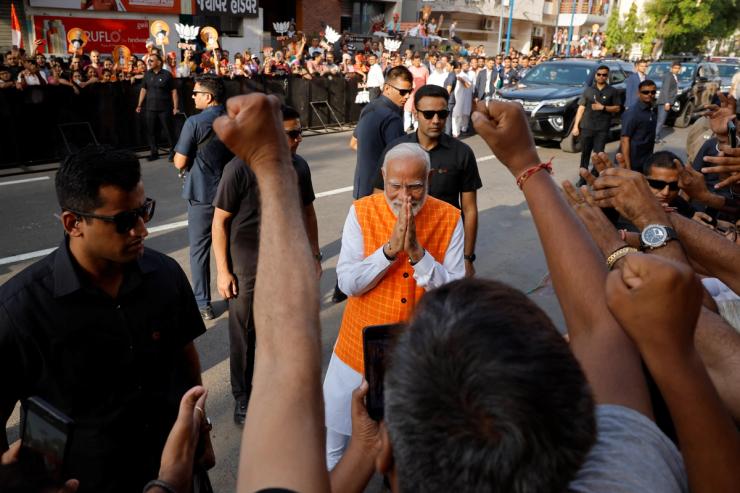The News
Indian Prime Minister Narendra Modi voted in the country’s general elections Tuesday as the mammoth, weekslong contest reached its halfway point.
In recent weeks, Modi has ratcheted up rhetoric seen as incendiary against the country’s Muslim minority and emphasized his economic growth pitch as his Hindu nationalist party seeks a legislative supermajority with its coalition — a feat that’s only happened once in Indian history.
SIGNALS
Modi’s party looks to the south
Modi’s Bharatiya Janata Party and its allies are expected to win a majority in the lower house of Parliament, but winning a supermajority — 400 out of 543 seats — would “extend the reach of the BJP to every corner of the country,” The Guardian wrote. Its strategy involves recruiting celebrity candidates to challenge veteran opposition officials, and appealing to Christians in the country’s south, nine coalition officials told Reuters. The states of Tamil Nadu and Kerala have been a “tough nut for the BJP to crack” because the party is not viewed as representative of local interests around language and culture, the South Asia program director at the Carnegie Endowment for International Peace told The Guardian. Local BJP candidates are leaning away from reinforcing Hindu nationalist narratives and campaigning around “larger than life” personalities instead, one party leader said.
Low voter turnout in the spotlight
India’s Election Commission said it was taking steps to boost get-out-the-vote efforts last week after being disappointed with voter turnout so far. That led political analysts to question whether Modi’s party can achieve the blowout victory it’s hoping for, especially as scorching temperatures have deterred some voters. But the chief economic advisor at SBI, the country’s largest lender, said the low turnout narrative is a “myth,” arguing that a better measure to analyze turnout is the absolute number of voters, which has increased compared to 2019. He predicted the remaining phases of the election will see “J-shaped” growth.
Modi makes global economic pitch, but questions linger
Indian stocks have surged during India’s election, buoyed by confidence that Modi will be reelected for a third term and boost the economy. Modi’s pledge to expand industrial output and lure foreign electric vehicle and semiconductor firms with the goal of making India a “developed country” by 2047 is a “pie in the sky” idea, one economist said, requiring 8% economic growth every year for the next quarter century. Questions also remain about Modi’s ability to improve India’s standing in the West: In a new survey, 75% of respondents in the US, UK, and France were concerned about Indian laws making it harder for Muslims to become citizens, and 70% of Americans said they are concerned about human rights in India.



